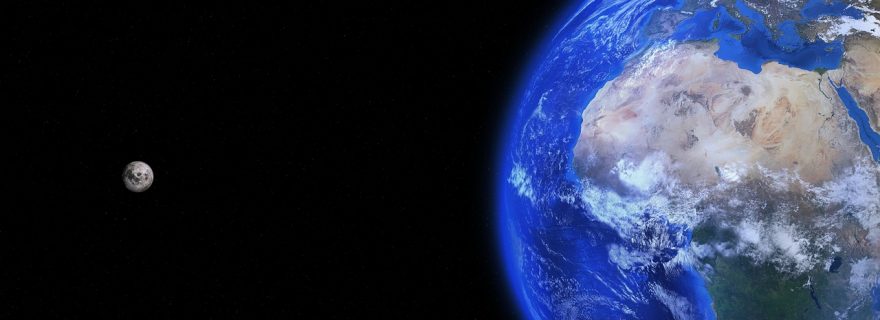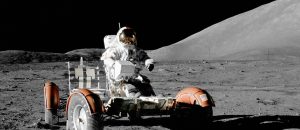The space exploration industry is galloping ahead with the latest innovation coming from Blue Origin. On May 9, the company’s billionaire founder, Jeff Bezos revealed a mockup of the Blue Moon autonomous spacecraft, which they hope to land on the moon by 2024.
What is the Blue Moon?
The Blue Moon is quite a large, fully autonomous, robotic space lander and cargo carrier designed to make cargo deliveries to the moon. The spacecraft, which stems from vertical landing tech used in Blue Origin’s New Shepard sub-orbital rocket, can soft-land a payload capacity of up to 6.5 tonnes (14,000 lb) on the moon’s surface. In design since 2016, the craft can also land moon rovers, science experiments, and even deploy mini satellites into lunar trajectory along the way – a capability that does not exist today. Moreover, it’s precision guidance and descent sensors that use machine learning tech will ensure that it lands accurately from its very first mission.
It is predicted that a future upgraded “stretched tank” variant of Blue Moon with an ascent stage could facilitate roundtrips for astronauts. The lander will be power-driven by a new hydrolox rocket engine called the BE-7 developed by Blue.
Blue Moon VS Nasa’s Apollo
While the Blue Moon somewhat resembles NASA’s old Apollo lunar landers, there are some significant differences, starting with its sleeker design. Also, since Apollo’s engineers were concerned that the soil on the moon was very soft and would make a lander sink too deep, the landing pads (or “feet”) under the landing legs were bigger. Now that we know the difference, the Blue Moon’s feet are smaller.
NASA created its Apollo landers explicitly to convey humans to the moon and, so, needed mortal hands to drop off scientific payloads. Blue Moon, on the other hand, is an entirely autonomous, robotic spaceship with in-built mechanisms that can drop off scientific gear, as well as lunar rovers. The lander uses a crane-like device (the davit system) that gently lowers payloads to the moon’s surface from its primary deck. The device can be tailored to drop off different kinds of payloads onto the lunar surface, including up to four big rovers simultaneously.
A massive development that is made possible by previous moon landings is that there are now detailed maps of its surface. Blue Moon incorporates a system that enables it to navigate independently by watching at the stars and features found on the moon’s surface and then land within 23 meters (75 feet) of its targeted landing spot. This precision navigation is good, because as Bezos says, “there is no GPS on the moon.
Partnerships or flying solo?
In a May 2018 interview, Bezos stated that Blue Origin would be building Blue Moon alone with private funding. However, it would happen much quicker if it were to be done in partnership with prevailing government space agencies. Bezos cited the December 2017 request by the Trump Administration to push NASA to try land astronauts on the moon by 2024, aside from the agency’s other beyond Earth orbit (BEO) missions. Trump also backs the Moon Village concept — a plan endorsed by European Space Agency’s head Jan Woerner for collaboration among companies and countries to cooperate on lunar abilities.
The Blue Moon could be used to buoy NASA’s activities in cis-lunar space or to transport payloads of ice from Shackleton Crater to sustain space activities.NASA won’t be able to meet the US request without having some lunar entryway in orbit in the coming five years. According to Bezos, Blue Moon could help meet the deadline.
As of yet, Blue Origin hasn’t formally offered the agency its moon lander concept as a candidate for its 2024 assignment. However, NASA intends to begin petitioning bids from private corporations by month’s end.
In 2017, Rob Myerson, Blue Origin’s president, said that the lander could be launched using several launch vehicles including the United Launch AllianceAtlas V, or perhaps be adapted to launch on NASA’s Space Launch System (SLS) rocket and next-gen Vulcan blastoff vehicle. It can also be started by the Blue Origin’s own New Glenn.
In short, Blue Origin does not need a contract with NASA to launch Blue Moon. Blue Origin has already acquired paying patrons. At the big reveal, Bezos said “people are very excited about this capability to soft-land their cargo, their rovers, [and] their science experiments onto the surface of the moon in a precise way. There is no capability to do that today.”



